John Campbell House, Ironton
Introduction
Text-to-speech Audio
Images
John Campbell House.
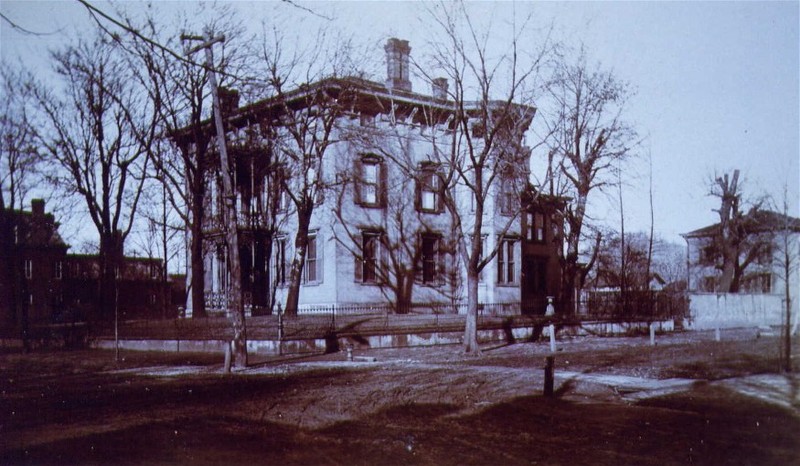
John Campbell.
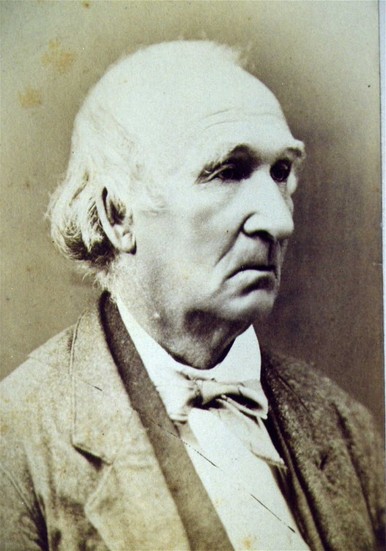
John Campbell's children.
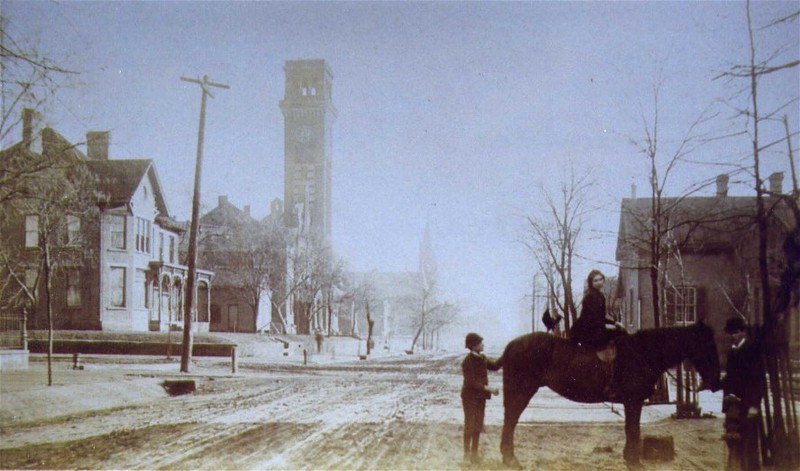
Tombstone of Jim Ditcher in Woodland Cemetery, Ironton
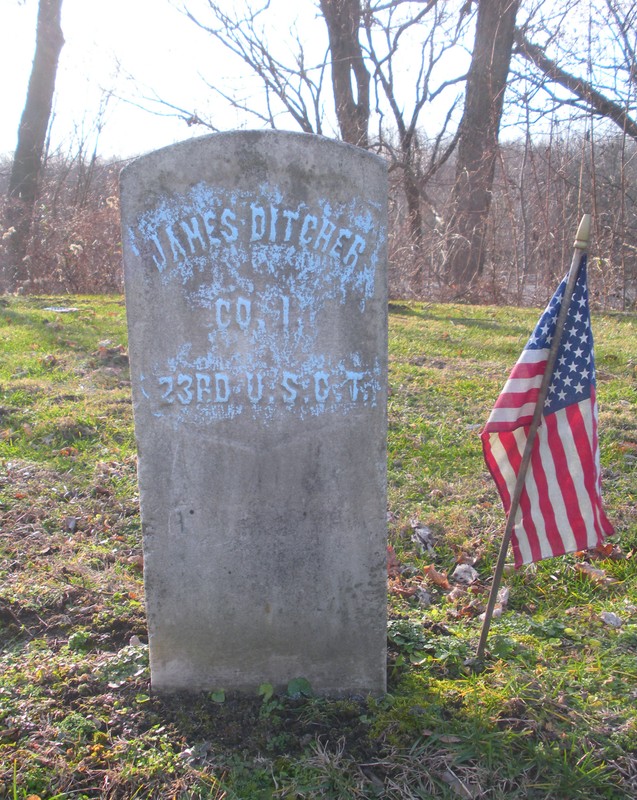
The John Campbell Memorial Home.
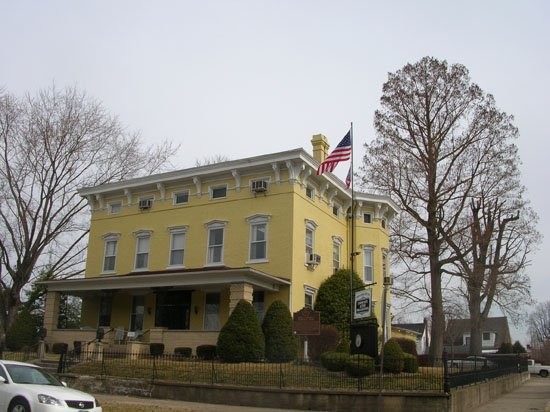
Marker for the John Campbell Memorial Home which reads, "John Campbell (1818-1891), founder of Ironton, was an ironmaker and president of the Ohio Iron & Coal Company, a Presbyterian, and an abolitionist. The house and barn, which he built in 1850, b
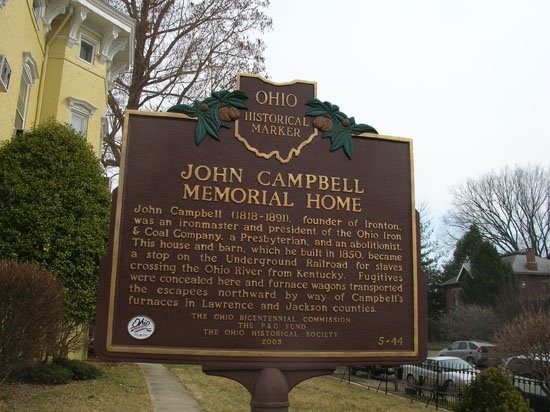
Backstory and Context
Text-to-speech Audio
John Campbell came to the Hanging Rock area just outside of the future city of Ironton in 1832 to work as a clerk. Campbell became involved with J. Riggs & Co. along with Andrew Ellison. Together they constructed several iron furnaces throughout Lawrence County. In the 1840s, Campbell assisted in the construction of iron furnaces in Greenup, Kentucky and the Gallia, Madison, and Monroe Counties in Ohio. From 1845 to 1851 Campbell laid out plans for the city of Ironton. By 1851, Campbell constructed his own home at 305 N. 5th Street, which still stands today.
Campbell’s pig iron industry put Ironton on the map. Ironton became the largest producer of the specific type of iron before, during, and after the Civil War. Additionally, John Campbell is known for his opposition to slavery and his help
in concealing runaway slaves. However, Campbell seemed to be more of a silent
partner in the Ironton network of the Underground Railroad. Several rooms in
his house were used to conceal runaway slaves, but beyond this, there is very
little to suggest further action. Still, the Ironton Register in August 1891
noted that 1,000 people showed up for Campbell’s viewing and also pointed out
that many African Americans attended his funeral to pay respects for the
kindness he displayed.
African American James Ditcher (also spelled Dicher) utilized Campbell’s horse stable and ox-driven furnace wagons to guide slaves to freedom in the North. He worked as a bartender and laborer in Ironton while earning the nickname “the Red Fox of the Underground.” Historian Keith Griffler recounts one of the Red Fox's deeds: “Ditcher found himself in a desperate situation when he received a woman and her baby rowed across the river in a skiff by some free African Americans from Virginia. He recalled, 'The slave catchers were close onto them when they got here.' Ditcher rushed to Campbell’s stable and got a horse, obtaining another from a local minister. Riding hard, they reached Olive Furnace, where they stayed with an African American named Harris.”[1] Ditcher was able to get the young woman and her child safely on their way north.
Below is an interview from the Ironton Register, October 31, 1878 with the Underground Railroad conductor John Ditcher. Ditcher’s exploits illustrate a working relationship with white people during the days of the Underground Railroad. But, more importantly, Ditcher represents the many other African Americans who also helped runaway slaves get to their freedom.
"James Ditcher is a modest mulatto, who is gently gliding into the
twilight of 50 years of age. He came to Ironton over 25 years ago, and in that
time has passed through many romantic experiences, and always came up smiling.
It is hardly supposable, with all his hard knocks and hair-breadth escapes, he
was ever submerged in the billows of anguish. Many and many a time, when the
tide of the world seemed running against him, James's philosophical soul would
break out in titillative wrinkles all over his face.
The other day, James was standing on the corner of Third and Railroad, leaning
on a pile of tile, when a Register reporter interviewed him. Notwithstanding,
only recently someone had shot at his wife as she stood in the door of her
domicile, not a cloud of sorrow dwelt on his brow. The bright sun was warming
and James never wore a more friendly smile.
Years ago, and before the war too, James Ditcher occupied a responsible position. It was not a paying office, and not by any means a safe one. He made no parade of it. On the other hand, he kept it a profound secret. Sometimes, people would allude to his important official relations, but James's innocent smile would throw them off their track. Many times, James was actually observed in the execution of his official duties, but he would conjure up a fascinating smile and tell an infantile tale, and oblivion would ensue. Yes, James was a conductor on the underground railroad, and many a train he has run toward the north star.
And this was the ‘subject of the story’ which Mr. Ditcher modestly unfolded
to the Reporter. James is not so quiet on the subject now as he was 20 years
ago. In fact, he grows somewhat thrilling and discursive when now he relates
his personal experiences. Thinking some things he said would be interesting to
print, the Reporter jotted down in substance James's narration:
‘From 1855 to 1860,’ says he, ‘I was largely connected with the underground railway.
I must have taken through nearly 300 slaves in that time. The route we'd take
was to Olive Furnace, or to Squire Stewart's in Symmes Township, then over to
Noah Nooks at Berlin cross
roads, and from there to Wilkesville, in Vinton County. I would take them
from Ironton to Olive or Symmes, and then there would be another fellow who
would take them to the next station.
‘Of course, I never did this for money, and never got a cent except from a free slave who was trying to get away with his wife and girl. He was the scariest fellow, and a perfect baby, too. Out near Olive, while I was trying to get through the woods over into Symmes, the free slave said he must have something to eat. I told him he mustn't show himself to anyone, or we would be gone up, sure. But he said he wouldn't starve, and down the hill he went into a coaling job. I knew we were pursued and thought that would let the cat out of the bag. So me and the women went on to a high point, where I climbed a maple tree to see if I could see the free slave; and sure enough, down in the coaling I saw him, and a lot of men around him. Soon the man made a jump, and away he scampered, the men after him. I had told him before what direction to take, and so I waited for him. Soon he came tearing through the woods, puffing and blowing, and together we slipped off the hill top down the hill side and among the thicket. While creeping quietly through that, some man just above us gave a yell. The free slave jumped as if he was snake bit. Both of the women had carpet-bags, and these I took, and told the women to follow down the hill. I could hear the slave catchers on our tracks. Just then we came to a big tree that had fallen and lay down the hill. Under this I scrounged the women and their carpet-sacks, and telling them when dark came to go down into the hollow and travel in this direction (pointing toward Symmes), I lit out. They did as they were told, and the next morning they and the man were over on Symmes Creek, safe. They got through all right, but I never saw them since.
‘Another time, a gang of five came over - a man, his wife and three children. I then was keeping a saloon on Lawrence St. I took the three children and shut them up in the garret over the saloon. Several fellows came that day looking for the runaways, but I told them I hadn't seen any. The old man and woman was hid in a house out on Sixth Street near Buckhorn. The slave catchers assisted by an officer surrounded the house, and things looked pretty blue for the runaway slaves. I had about given up, but when the officer went away to see about a warrant, we slipped the runaways out; and by the time the slave catchers moved up to bag their game, we had them hid safe in the house of a rich lady of this town.’
‘Who is the rich lady?’ asked the Reporter. ‘Oh, I won't tell that,’ said James, ‘she's a mighty good woman and was mighty glad to hide the slaves; and they staid there until night, when they and the children were put in charge of a barber then living here. He took them as far as the “beech woods” two miles below town, but getting scared, abandoned them, leaving them in the woods. I went down then and helped them on. They went through the woods all the time, passed in sight of Buckhorn Furnace, and got safely out of this county and were not retaken. On coming back to town, I met three or four of the slave catchers looking for the trail. I was right on them before I knew it, and had to walk right between them. La, but I was scared just then. They looked wicked at me.
‘I remember once, a small gang of three came down here - one of them was a woman with a baby. They were brought down in a skiff by some other free slaves. The slave catchers were close onto them when they got here. My, but they threshed and ducked the men that rowed that skiff! Things had to be done in a hurry, and to get away with that woman and baby, too, was a big thing. I went to John Campbell's stable and sneaked out a horse. Preacher Chester loaned me his horse and side saddle. We started and pushed as fast as we could. Late at night we got to Mr. Harris's, a colored man, living near Olive Furnace. There we stayed until morning. The pursuers were close on us; they stopped for the night two miles this side of us, at a whiskey shop, but got tight and the next morning didn't get on the chase until we were several miles ahead. We got safe to the Stewart settlement, and then a young fellow took charge of the gang and helped them on to Nook's at Berlin cross roads. On my way back, I met the fellows who were after the slaves. I knew them - one was Mose Claybaugh, another, Captain ____, and the third was the owner of the slaves. I was riding Mr. Campbell's horse and leading Preacher Chester's, with the side saddle on. They asked me what I had been doing with that horse and side saddle. I told them I had been to Gallipolis to a dance, and had had my girl with me. They called me a d__n liar, threatened to shoot me, and swore they would shave Chester's horse's tail. I sided away from them and they did not disturb me.’
Several other incidents did James tell the Reporter, narrating them as if they were occurrences of the past week. In the course of his recitals, he would speak of the assistance and advice of certain men, but when asked who those men were, he shook his head and smiled.
Ditcher was a very successful conductor. He never lost but two or three slaves, and they were captured after they left him. Once, near where Flower's store is, he parted with two slaves directing them to Bloom Switch, where they could take the cars. They got through all right; but when on the car, were nabbed and taken back to Kentucky. But to prevent capture, the utmost secrecy and privation were required. They would always have to travel by night, or slip through the woods and along the ridges, avoiding the residences, or diggings or coaling jobs. A gang would hardly ever start out, but that the news of their escape preceded them; and all strange slaves on the line were at once suspected and captured, as the rewards were generally lucrative.
It made no difference what James was doing, he would drop everything when train time came. He is a plasterer by trade, and many a time has he thrown down his tools and left a ceiling half covered with mud or skim, to assume his more important duties of conductor of the ‘underground.’ You wouldn't think it to look at him, that he was a dashing liberator; but he never shunned a post of danger. His trains departed and arrived while the people slept securely at their homes.
Business on the ‘underground’ has ceased, but James is as youthful and smiling as ever."
Sources
Ironton Register, October 31, 1878.
The John Campbell Memorial Home. Remarkable Ohio. Accessed May 15, 2018. http://www.remarkableohio.org/picture.php?/5044. Photo source.
The John Campbell Memorial Home Marker. Remarkable Ohio. Accessed May 15, 2018. http://www.remarkableohio.org/picture.php?/5045. Photo source.
